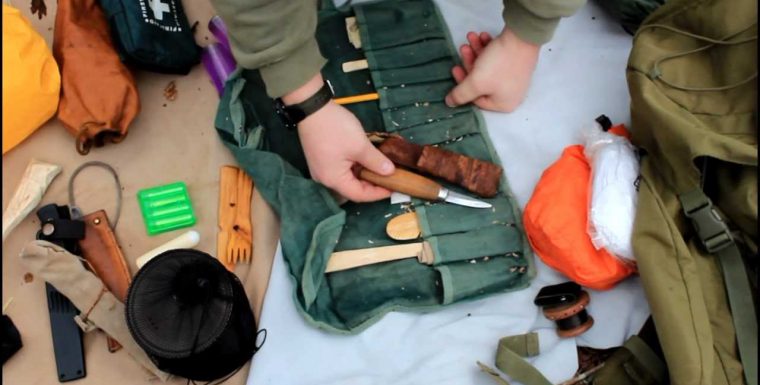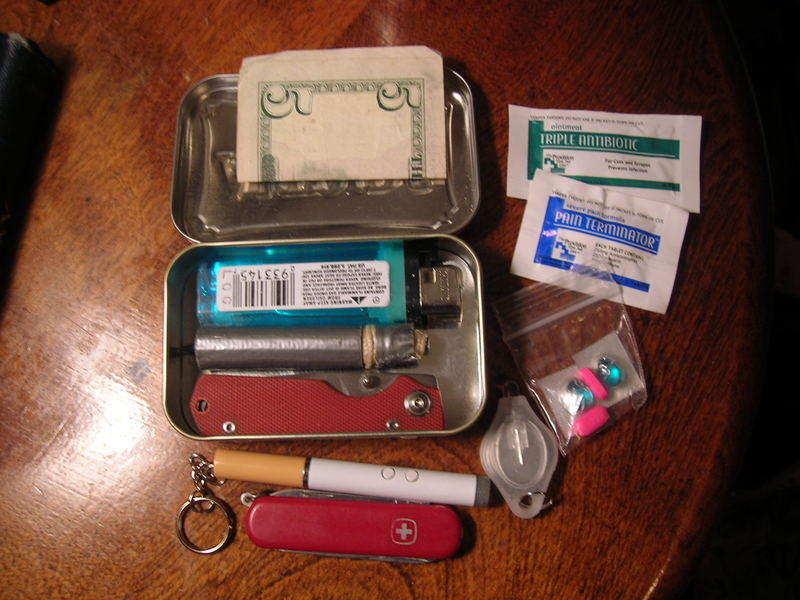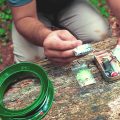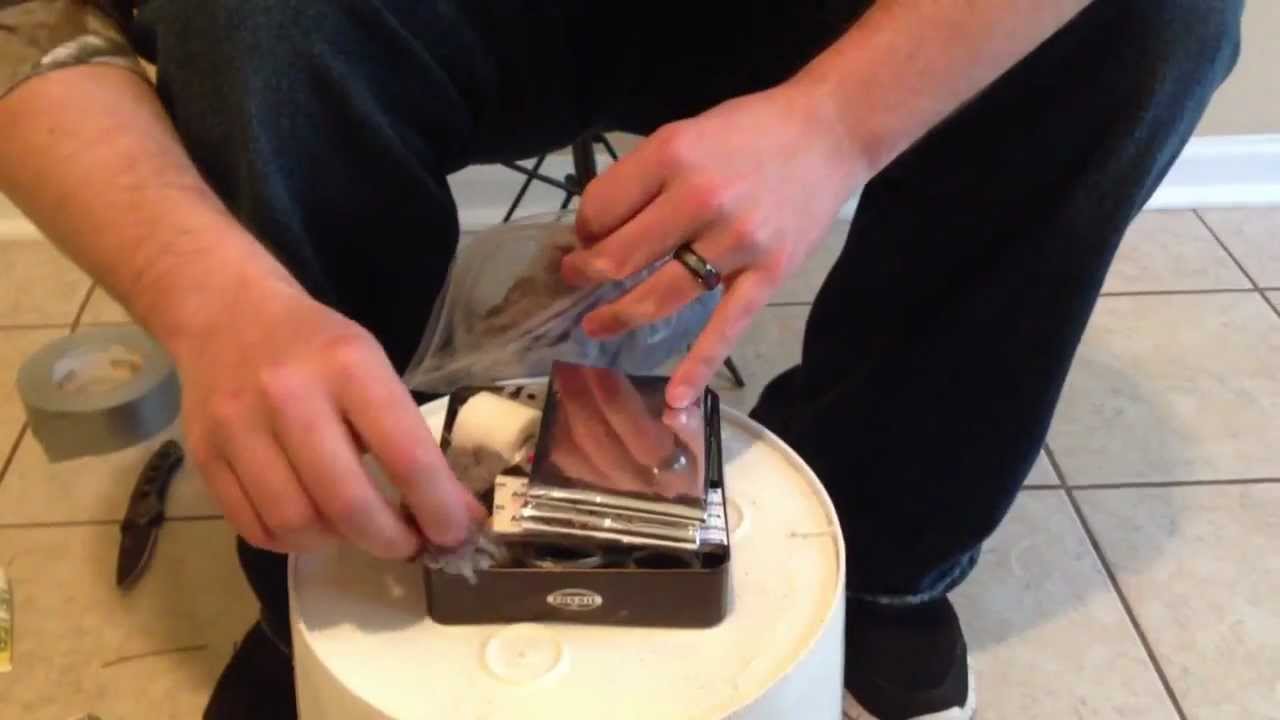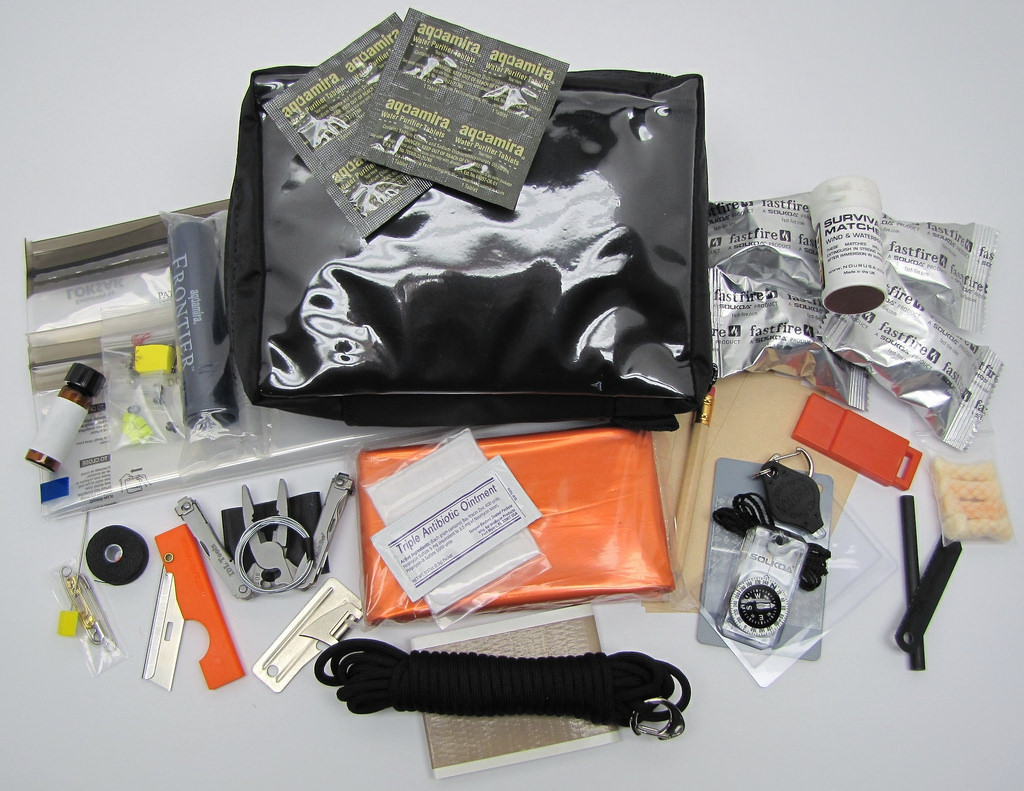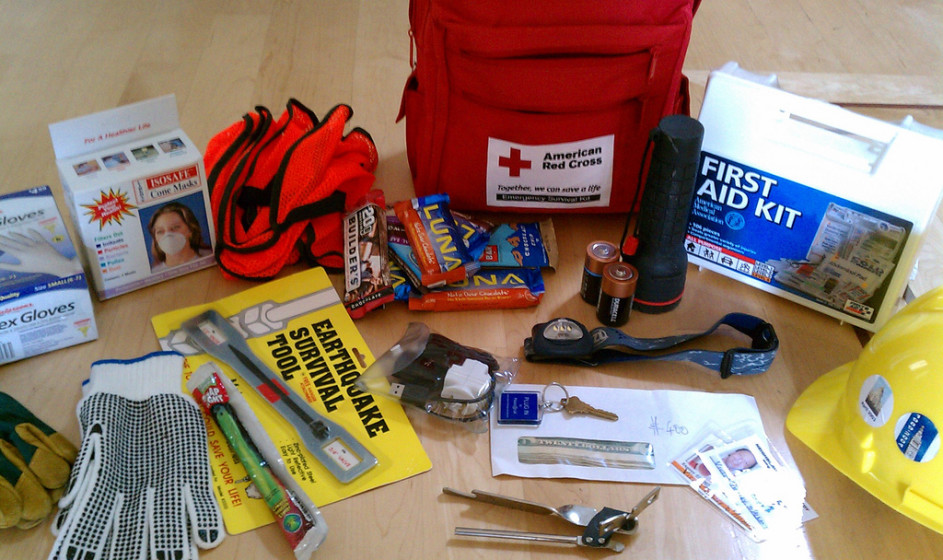By Rus Slater
The purpose of a survival kit in this kind of situation is to keep you alive and to help you attract attention of rescuers.
With these aims in mind the kit suggested has options for spending money on proprietary equipment and options for home-made equipment that is just as effective but, in these credit crunch days, cheaper or free. I’m going to describe a generic all-weather survival kit; obviously use your own common sense if you are planning on going somewhere ‘extreme’; the Sahara and the Arctic will require different approaches to a North American wilderness camping trip or a charity trek along the ‘Freedom Trail’ across the Pyrenees
Firstly let’s look at kit for attracting attention.
1. It is worth considering an emergency battery/charger for your mobile phone. Remember if you do pack one to update it each time you upgrade your mobile. You can’t make these yourself (unless you are an electronic engineer) but there are plenty of inexpensive generic models even before the standardization of charger plug sockets which is due in 2011
2. A signalling mirror is always worth having, it will ‘carry’ across several miles, even in low light conditions. DON’T get a glass mirror, they break too easily. Get a steel one, if you want to go for the home-made option you can use a sheet of metal (or the inside of the lid of your survival kit if you are using a tin). Rub it with valve grinding compound or auto colour restorer to achieve a mirror polish.
3. Hi-viz tape is very good for creating words (HELP or SOS) or for making direction markers. It is available from hardware stores and builders merchants.
4. Bizarre though it may sound a brightly coloured kite, one shaped like a modern parachute, is also a good way to attract attention in rural areas. Most toy shops and gadget shops sell ‘pocket’ kites for a few dollars that squish up really small and are therefore perfect for a survival kit.
5. Smoke is also a good attractor of attention so you need to both have fire making equipment AND a knowledge of what fuels make good smoke; damp straw and damp leaves make good smoke, as do many plastics. It doesn’t matter if the smoke is black or white, just so long as it is thick enough to be seen.
OK, now let’s look at the things that are worth taking to keep you alive; you need heat, water and first aid
6. Fire will help you to stay warm as well as perhaps helping you to eat, purify water and attract attention. You need to have something to start a fire and the simplest option is to pack a disposable lighter! Yes, it is a bit non-purist but when you are trying to survive you can drop your principles. If you want to be more ‘authentic’ then you can go for weatherproof matches; make your own by using non-safety matches and dipping the head and top quarter inch in melted candle wax. You can also get a ‘flint and steel’ from pretty much all camping shops if you really want to go for the cave man survivalist approach. One of these will outlast a disposable gas lighter by several years so if you are going to end up stuck on a desert island it is a good bet! Getting a spark is only half the battle, you need something that is going to start to burn quickly and hot, short of learning all about shaved birch bark and may dust the simplest and best thing is lighter fluid. You can sometimes buy little rubbery pods of lighter fluid which you can squirt onto your main fuel for a fast start fire, failing that pack a small atomizer of lighter fluid. A tampon is highly compresses cotton wool, which, when teased out can also be used as tinder.
7. You need to be able to collect and carry water, and you need to be able to purify it to drink. A couple of standard party balloons are excellent water carriers, especially if you also pack a couple of those clips that you use on freezer bags to seal them with (tying a knot in the top of a balloon is OK but knots in balloon rubber are almost impossible to untie!) Some people reckon condoms are better but they have two distinct disadvantages; firstly they are more expensive and secondly, they tend to come with spermicide or lubricant which rather mars the flavour of the drinking water. Purification tablets can be bought from most camping shops or even a purification straw though they are still quite expensive. You can also boil water in the tin of your survival kit to sterilise it. A sheet of thin polythene about two feet square will allow you to either collect rainwater or make a ‘survival still’; an emergency rain cover of the type you often get in hotel guest packs is just the thing.
8. In terms of first aid I’d recommend taking a short course NOW, even if you just buy a DVD for a couple of dollars and take an hour to watch it; you never know when you will want to save the life of your spouse, partner or offspring at home, never mind out in the boonies! Into your survival kit pack needles and thread (this is a first aid essential as well as a repair essential for clothes), add a small collection of sticking plasters and a small vail of disinfectant, let’s face it, it might help if someone hears you scream as you dab it on to your blisters cuts or grazes. A small pair of tweezers for removing stings or debris in wounds is also worth adding. The tampon mentioned above in point 6 can also be used as cotton wool on small injuries or, in the case of a puncture wound, can be inserted whole to staunch blood loss. Some sugar lumps or sachets and salt sachets from any take-out food store are vital to replace your body’s losses if you get diarrhea.
9. There are some miscellaneous things that may be worth having as well.
a) a reduced size guide to useful things such as morse code, first aid, building a survival still, building a shelter. Make one up, reduce it to the smallest type you can and print it on the thinnest paper.
b) a magnifying glass. This can be one of those flat, credit card style plastic ones; they are small and light, you can use it for reading the guide in a) above, for focussing the sun’s rays to start a fire or for spotting stings, barbs and grave in wounds. These one are often available as free gifts at opticians and bookstores, alternatively a small glass one from a toyshop will be fine.
c) a knife; I’m not talking about a World War III Rambo/Crocodile Dundee type knife, but something sharp that will fit into the kit. You want the sort of thing you can cut string with or shave bark for kindling rather than something to chop down a tree. A single edge razor blade or a short vegetable knife with the handle cut down is perfect.
d) a wire saw for cutting firewood and shelter supports, splints and stretcher bars.
e) about 20 feet of very thin nylon string. You aren’t going to shin down cliffs with it, you want it to make a shelter, a splint, a snare or to replace boot laces.
f) one of those tiny key ring torches about the size of a coin, especially one with a red LED, you can usually get them at gas stations for a couple of dollars
You’ll notice that there isn’t a compass….the best thing to do in a survival situation like this is to stay where you are and draw attention to yourself. A compass is worth little if you have no map or don’t know where you are on the map. If you remember to look at the map before you set off and you know, for example, that wherever you are you can head south and reach a main road then a compass is of use.
Finally…don’t pack this in your rucksack, bike pannier or canoe stow bay…put it in your pocket, preferably a pants pocket; that way if you lose everything else you still have your survival kit, and let’s face it, it is when you’ve lost everything else that you really need it.
Article Source: Basic Survival Kit to Bring When Camping – What to Pack
